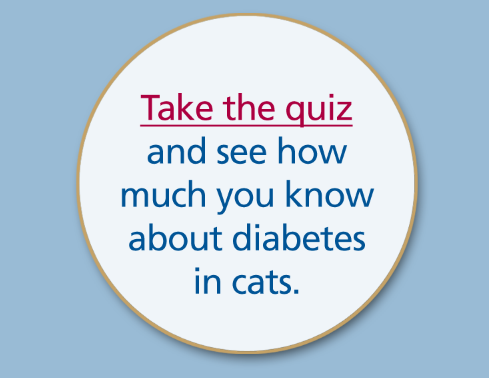Frequently Asked Questions (FAQs)
Feline diabetes questions
- What are polydipsia, polyuria, and polyphagia?
- What other conditions have the same signs as diabetes?
- What is the expected life span for a diabetic cat?
- Is feline diabetes similar to human diabetes?
What are polydipsia, polyuria, and polyphagia?
You’re likely to encounter these terms as you learn more about your pet’s diabetes. These definitions will help:
- Polydipsia is the medical term for excessive thirst, usually noticed when a pet seems to be drinking excessive amounts of water.
- Polyuria is the production of large amounts of urine in a given period, such as per day. It is often the result of polydipsia.
- Polyphagia refers to eating more food than usual per day or eating more frequently.
What other conditions have the same signs as diabetes?
Cats with diabetes mellitus drink more water and urinate more than normal. They usually have good or increased appetites, but usually lose weight. Other common conditions with these signs are hyperthyroidism and kidney disease.
To diagnose diabetes, your veterinarian will measure your cat’s blood glucose concentration and test your cat’s urine for glucose and ketones.
What is the expected life span for a diabetic cat?
With consistent, effective treatment, lifestyle adjustments, and adequate monitoring, a diabetic cat should have the same expected life span as a non-diabetic cat of the same age.
Is feline diabetes similar to human diabetes?
Yes, the two conditions are very similar. In fact, your cat will be using medication, equipment, and monitoring systems that are similar to those used by diabetic people. The main difference is that diabetic cats usually require insulin, at least when starting treatment. Also, if treatment is started early, there is a chance that diabetic cats can go into clinical remission, meaning that they no longer require insulin injections.



